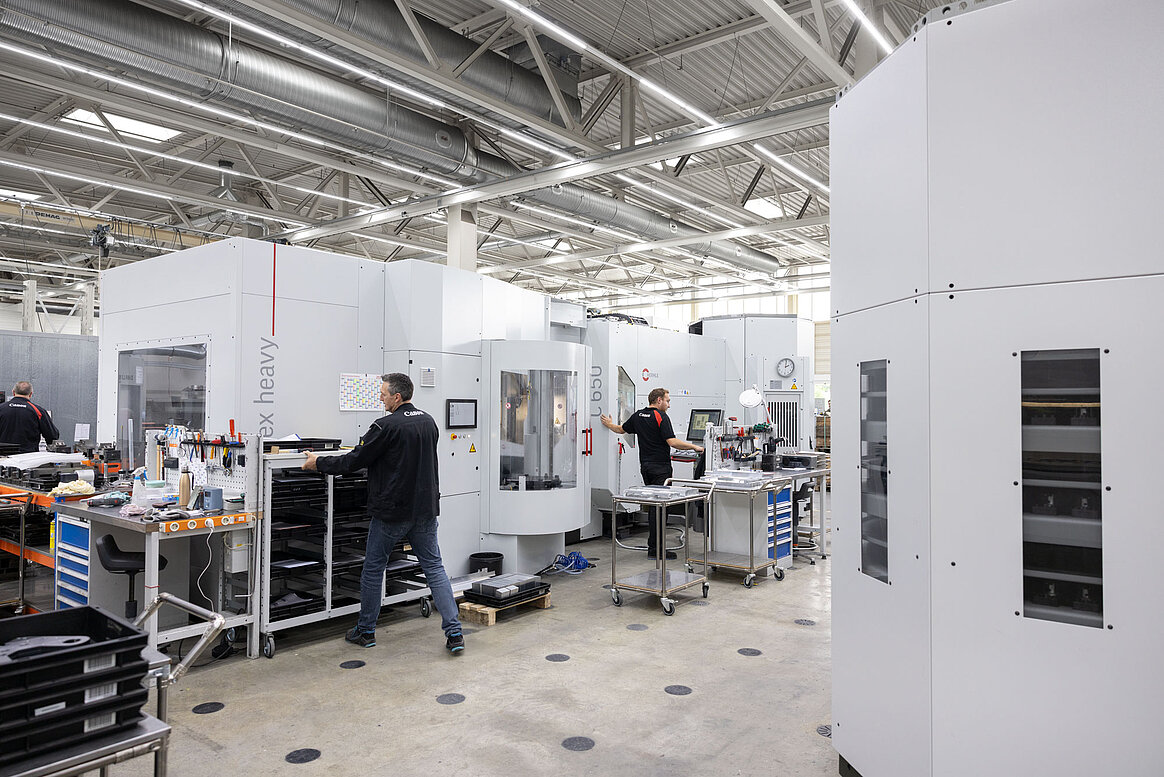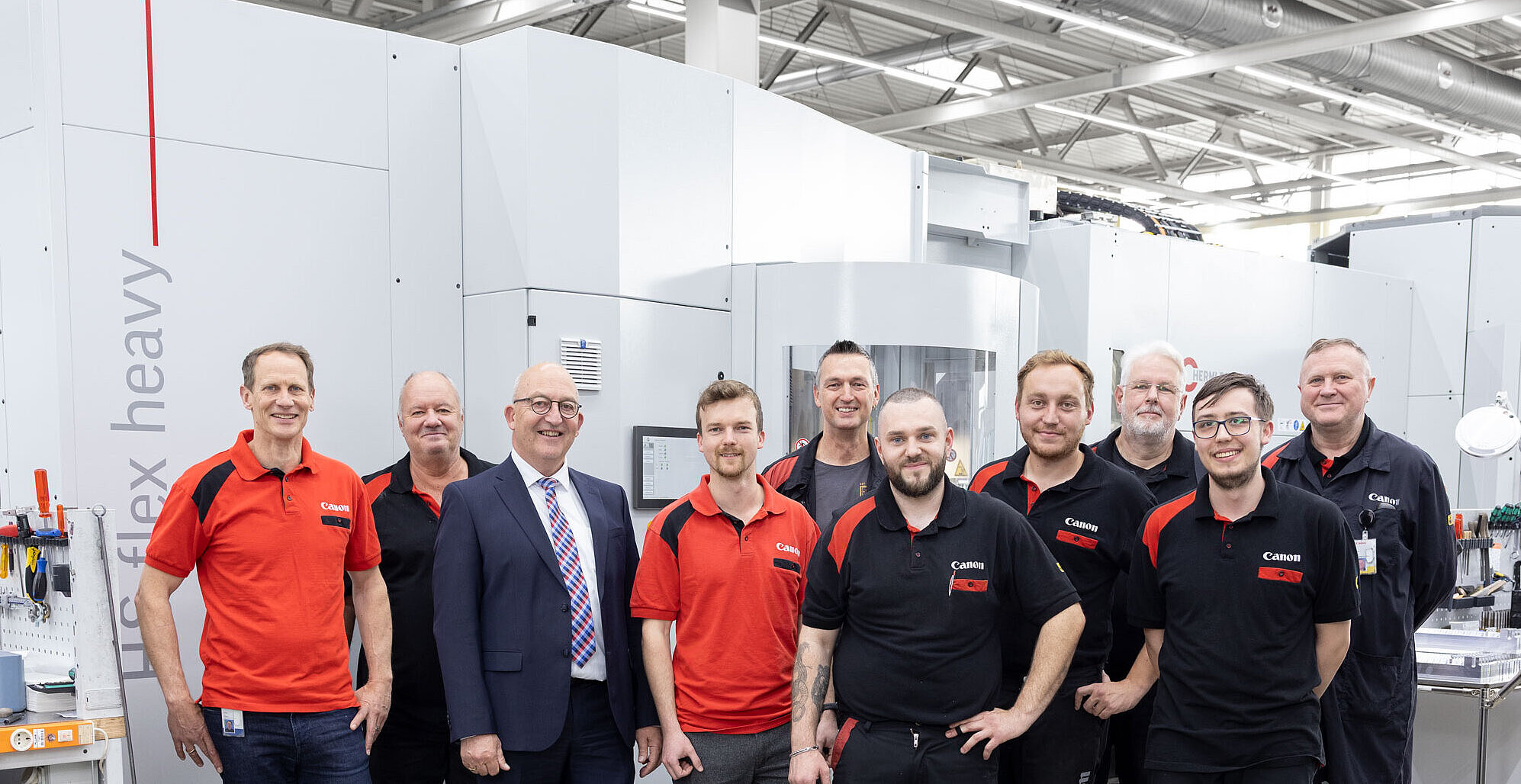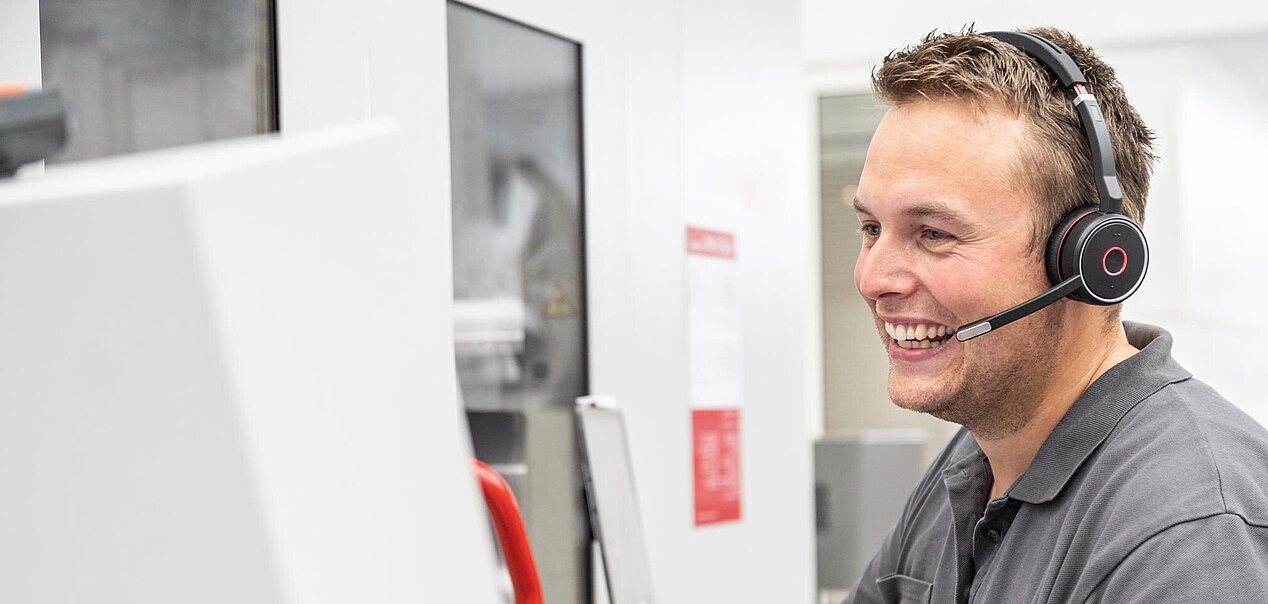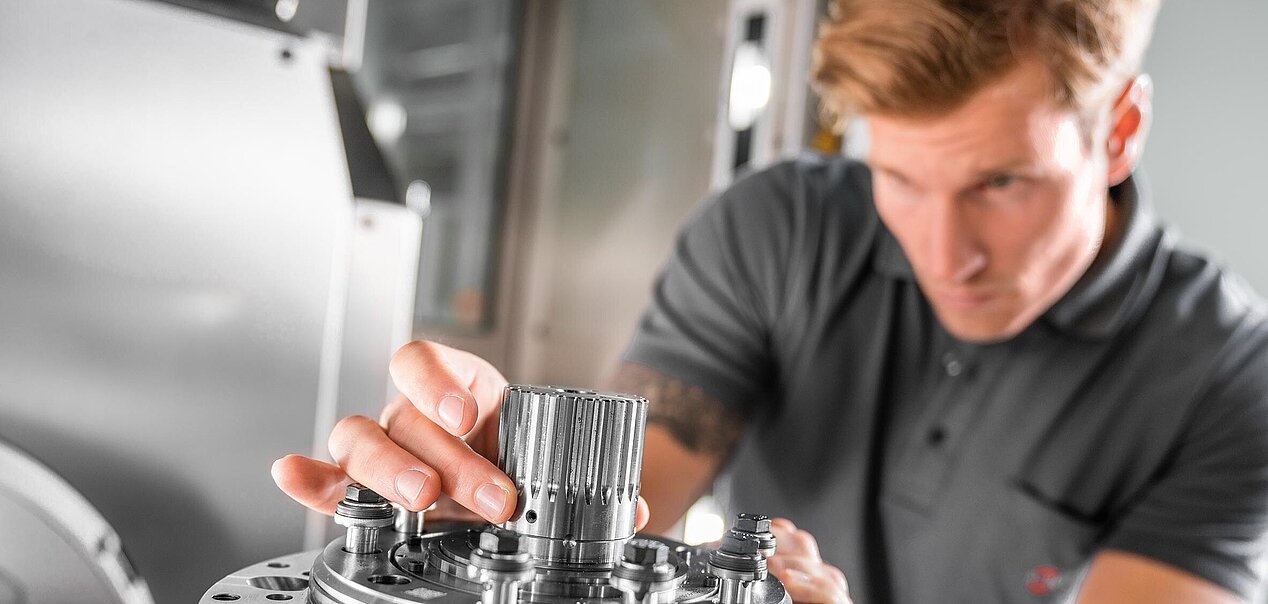From blank to high-tech part
Six days a week, around the clock: In Poing, two HERMLE machining centres C 650 U machine precise components for Canon Production Printing. The 5-axis machines, featuring the automated handling system HS flex heavy, turn night into day – fully automated series production instead of the manual machining of individual parts.
If you have ever read a book, received an invoice or bought a lottery ticket, you might have already held a piece of Poing in your hands. In this small municipality on the outskirts of Munich, machines are built that deliver top performance in print shops around the globe. It is also home to one of Canon Production Printing’s facilities, where roughly 1,000 employees produce digital printing solutions for an array of industries. The product range primarily includes high-speed digital printers, which are specifically designed for high volumes and speeds – thus ensuring maximum productivity. Besides production, the innovation and technology centre for high-speed feed printing systems is also located at the facility.
Canon Production Printing is a member of the large Canon family based in the Japanese capital Tokyo. The group of companies employs around 170,000 people worldwide and generated a turnover of 4.5 trillion Japanese yen (approx. € bn 27.3) in 2024. Canon Production Printing emerged from the Dutch company Océ, which was founded in Venlo in 1877. Over the years, it has gone from being a manufacturer of butter colouring and blueprint paper to a specialist for copying technology on plain paper. Canon acquired Océ in 2010 and became the global market leader in digital production printing solutions. Since 2020, this Canon division has been operating under the name Canon Production Printing.
Precision and efficiency
The aim of Canon Production Printing: To provide its customers with high-quality digital printing solutions that guarantee outstanding colour accuracy and image quality – while at the same time optimising printing processes through suitable workflow software applications, thereby helping them to save both time and money. “Our products are characterised by efficiency and excellence,” explains Michel Detische, procurement account manager NPR investments at Canon Production Printing. “And this is also what we expect from our own production.”
This is the reason why the company swears by HERMLE 5-axis machining centres. Two C 650 U machines with the adapted heavy handling system HS flex machine aluminium, steel and stainless steel – from individual parts for prototyping through to series production. “The precision and repeat accuracy of the machines is excellent,” claims Florian Neumair. He acquired extensive experience with the machining centres as a team leader in the milling department and now oversees CAM programming. Senior director manufacturing Dr Lars Jörgens adds: “It was also essential for us that the combination of machine and adapted automation is compact and occupies minimal space in the production workshop.”
Convincing across the board
“We started using our first automated C 650 U back in 2021,” recalls Dr Lars Jörgens. At that time, the company was still operating a milling centre from another manufacturer, but it was already 20 years old. “The table could be rotated by 180 degrees, meaning the qualified employees could clamp the next workpiece main-time parallel,” he remembers. “Needless to say, that is still a long way from unmanned production during a third shift.” By means of a comprehensive benchmark, Canon Production Printing determined which system best met its specific requirements for precision and automation. “For example, we compared the installation area, the tool and pallet storage and, of course, the costs in advance. The clear winner was HERMLE,” adds Michel Detische.
-
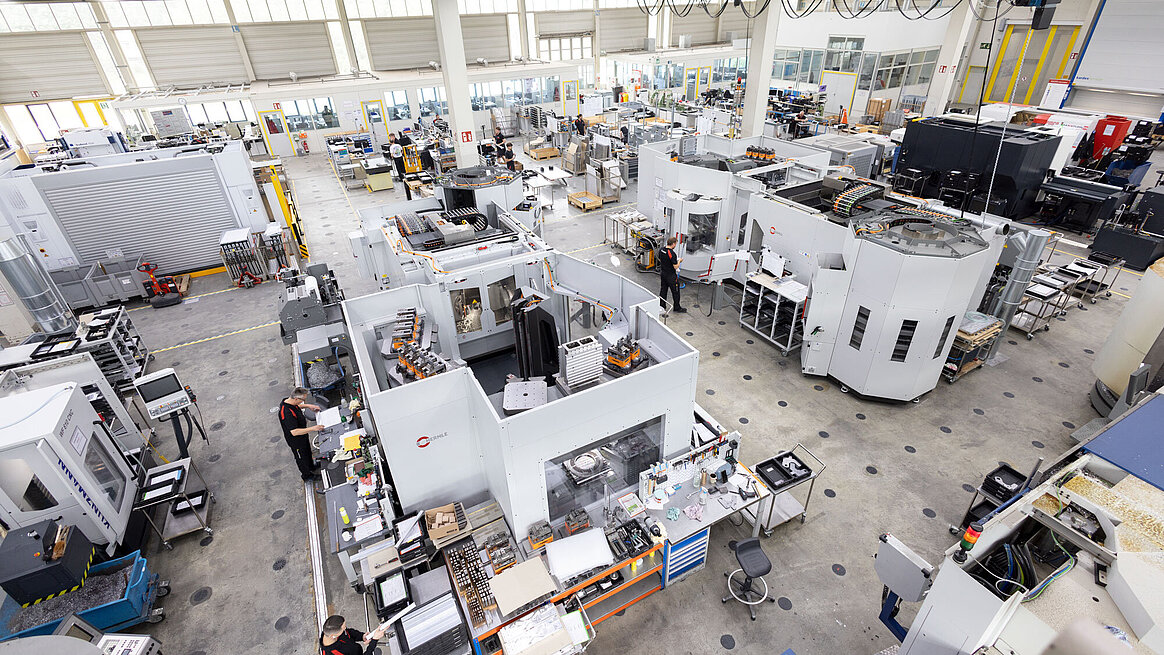
In Poing, Canon Production Printing produces prototypes and series parts on its two C 650 U machines with the adapted handling systems HS flex heavy. -
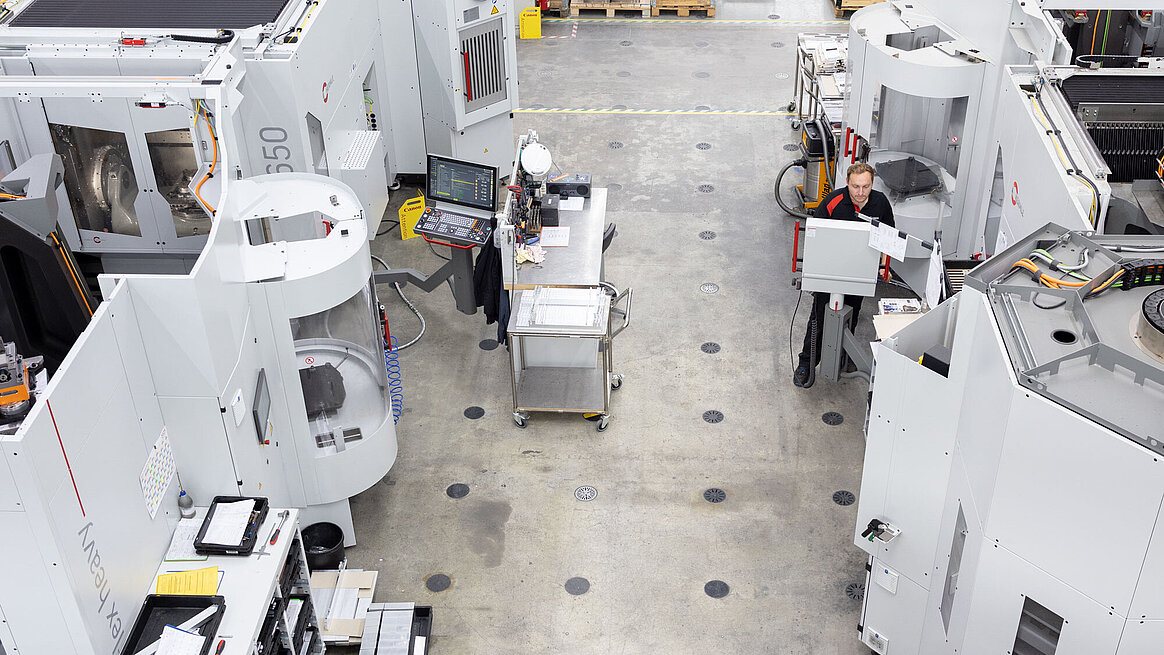
In Poing, Canon Production Printing produces prototypes and series parts on its two C 650 U machines with the adapted handling systems HS flex heavy. -
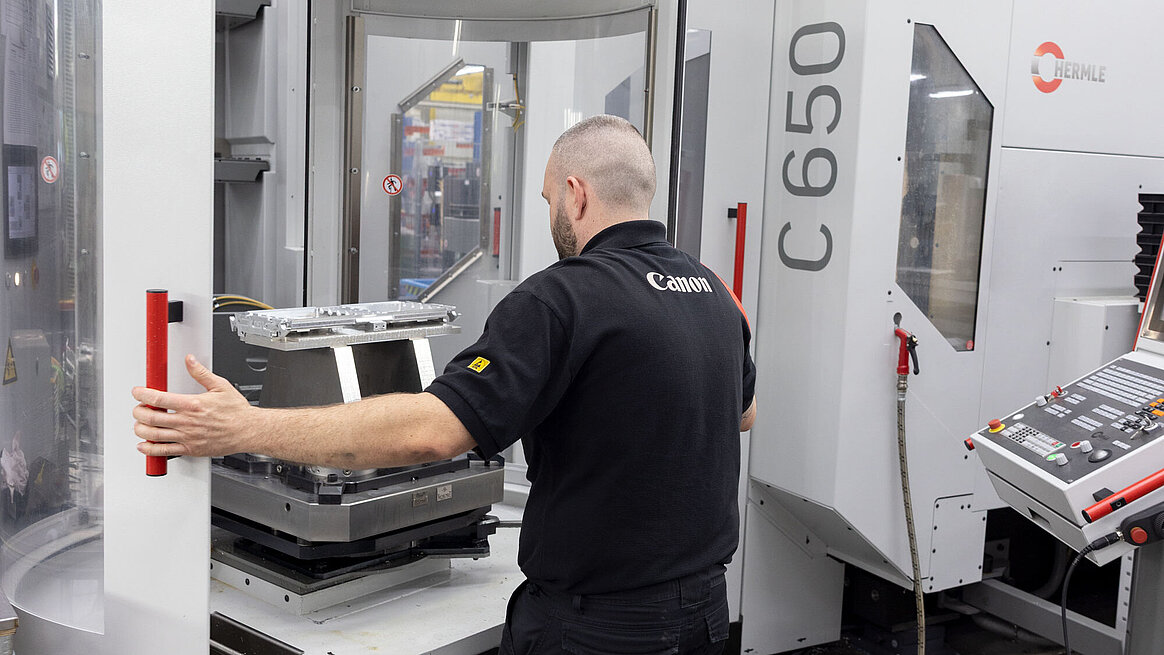
Thanks to main-time parallel setup, the 5-axis machining centre operates around the clock. -

CNC miller Felix Kirmair appreciates the convenient operation of the Heidenhain TNC7 control. -
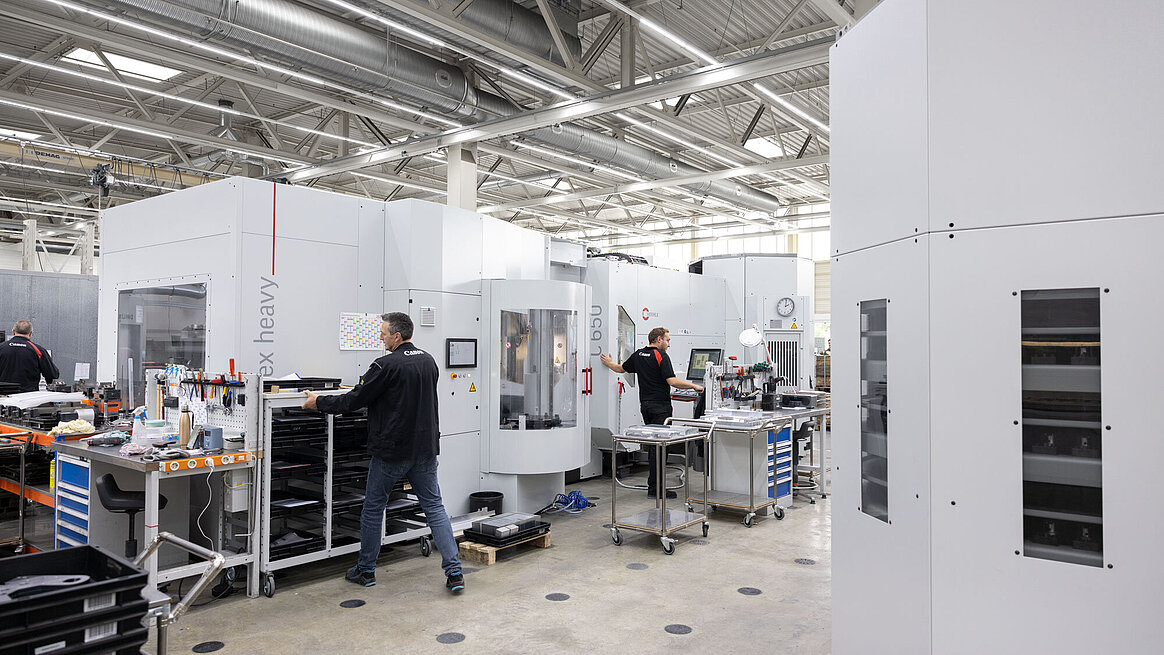
Whether batch size 1 or 100 – Canon Production Printing can respond flexibly to all customer needs with the two HERMLE C 650 U machines. -
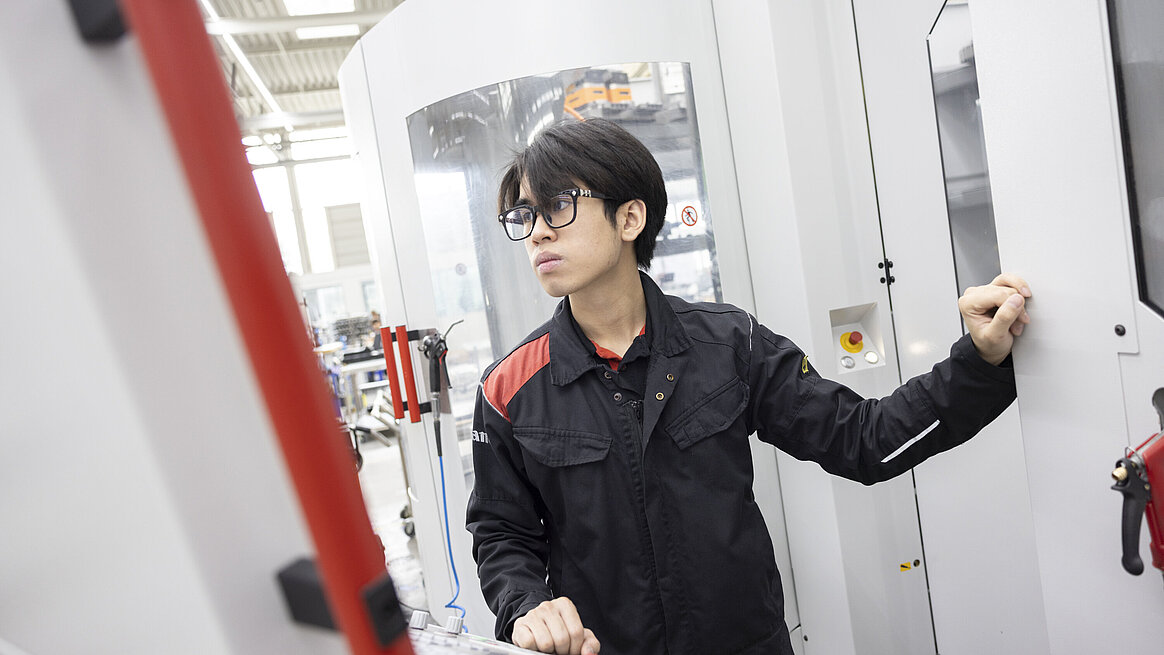
Shortly after installation and setup, the 5-axis machining centre was already machining workpieces for series production. -
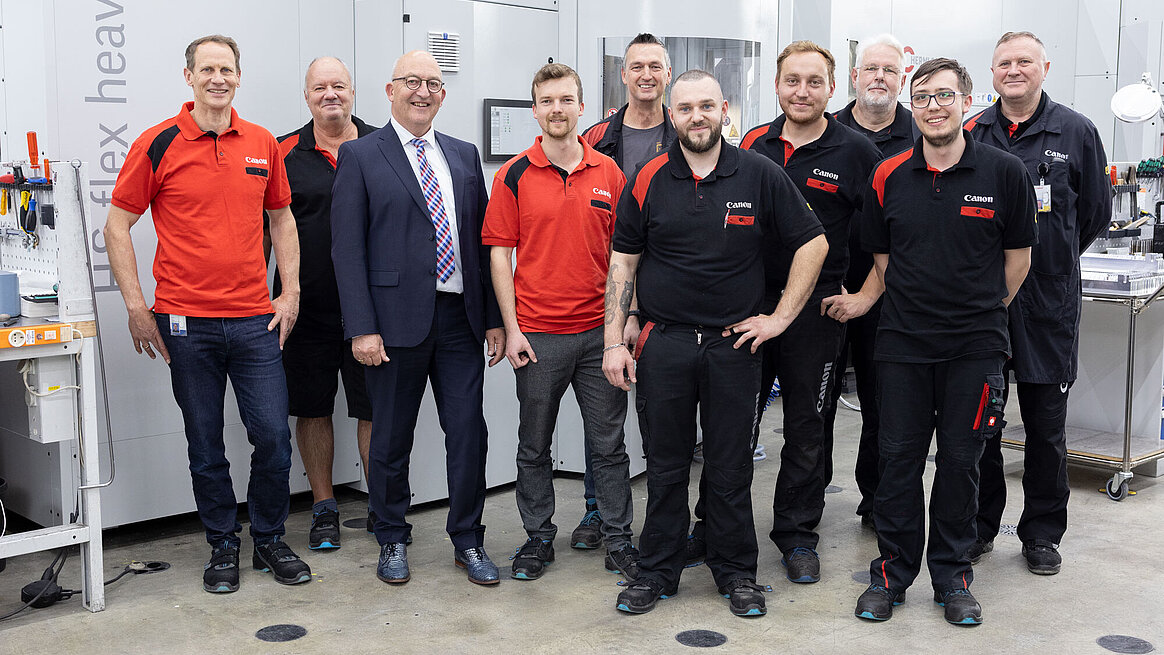
The HERMLE specialists at Canon Production Printing, including Dr Lars Jörgens (1st from left), Michel Detische (3rd from left) and Florian Neumair (4th from left)
Identical twins for maximum flexibility
The C 650 U has been busy machining prototypes and series parts for four years now. Thanks to the handling system with 15 locations and the additional magazine ZM 216 with 216 tools, Canon is able to produce around the clock, six days a week. “Despite this fact, capacity was still limited, which is why we ordered the next system in 2024,” explains Dr Lars Jörgens. “At the time, we were having to manage multiple deadlines and machine workpieces on other machines; tasks that would have been far more efficient on the HERMLE machine.”
The second C 650 U, which was delivered in May of this year, is also equipped with an adapted heavy handling system HS flex and boasts the same equipment as the existing machine. “We deliberately chose an identical system, as it guarantees maximum flexibility in terms of our orders and because our staff are able to work with the new HERMLE from the start,” explains Dr Lars Jörgens. “We can produce workpieces on both machines without the need for any adjustments.” There is only one small difference between the two machining centres: The new model belongs to GEN2 – and thus to the second generation of the established product line.
Setting benchmarks
The HIMS tool (HERMLE Information-Management-Software) offers real-time insights into the machine status – even via live messenger. HACS (HERMLE Automation-Control-System), a clever software solution for automation, not only calculates runtime and tool usage in advance but also dynamically adapts the sequence plan. The standard GEN2 control is the TNC7 from Heidenhain, a further development compared to the former TNC 640. HERMLE has simplified programming and operation thanks to extensive additional features. “The control now feels much more computer-like. For example, I can open multiple windows simultaneously or work with tabs,” says Florian Neumair enthusiastically.
The new machine generation relies on integrated energy recovery and highly efficient servo drives. Users benefit from low operating costs and increased sustainability. The comprehensive update of the electronics, sensor technology and energy efficiency represents a major gain in productivity.
Ready for the future
The second C 650 U has been in operation since June of this year. “Installation and setup went smoothly, once again, and the machine was ready for operation in just four days,” says the senior director manufacturing. “Our staff received a short briefing from HERMLE, and we began producing the first components soon after that,” says a delighted Dr Lars Jörgens.
